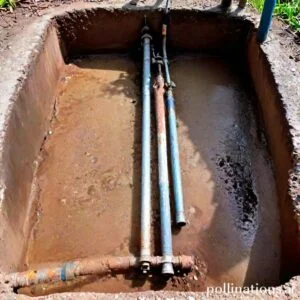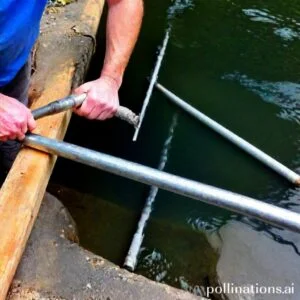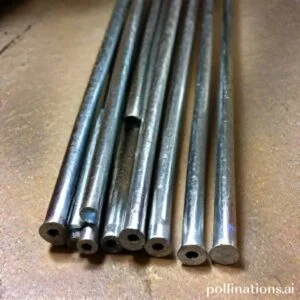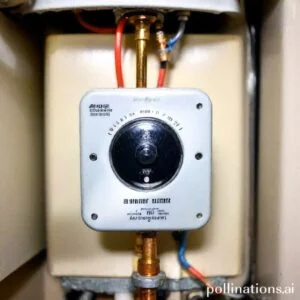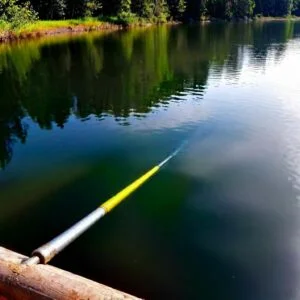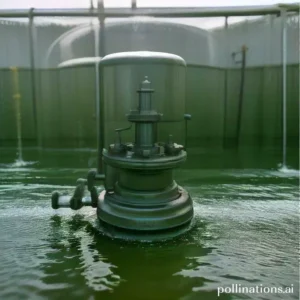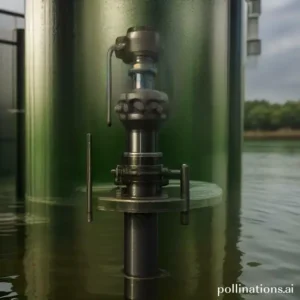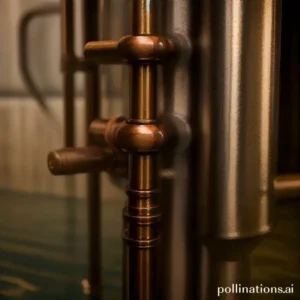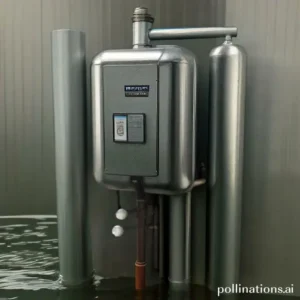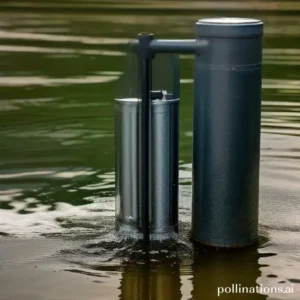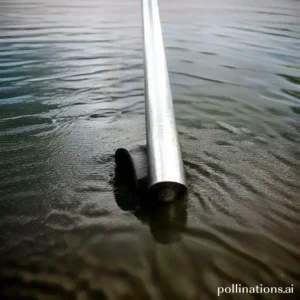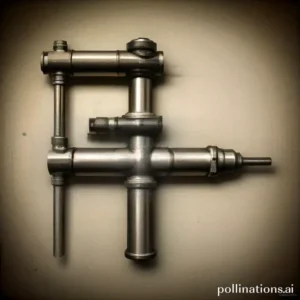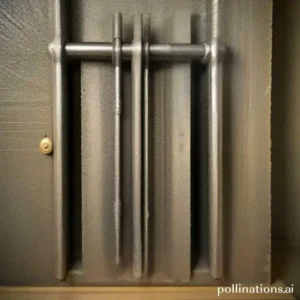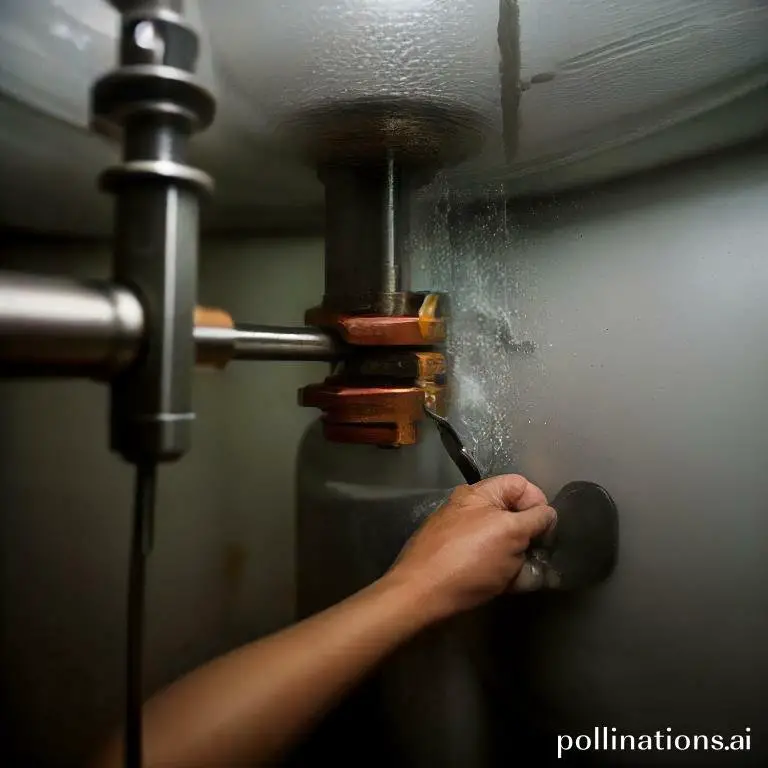
II. Installing a new anode rod is a relatively simple DIY project that can extend the life of your water heater and save you money in the long run.
III. To install a new anode rod, turn off the power and water supply to the heater, drain the tank, remove the old rod, and replace it with a new one, making sure to tighten it securely and refill the tank before turning the power and water supply back on.
Learn how to install a new anode rod in your water heater with these easy DIY tips. This simple maintenance task can extend the lifespan of your water heater and prevent costly repairs.
We’ll walk you through the step-by-step process, ensuring that you have all the information you need to complete the job successfully. Don’t let a worn-out anode rod compromise the efficiency of your water heater.
Take control and keep your water hot with our helpful guide.
Grasping Anode Rods
An anode rod is a vital component of a water heater that helps prevent corrosion and extend the lifespan of the tank. It is a metal rod typically made of magnesium, aluminum, or a combination of both, that is inserted into the water heater.
1. What is an anode rod and how does it work?
The primary function of an anode rod is to attract corrosive elements in the water and sacrifice itself to protect the tank. This process is known as electrolysis. The rod corrodes over time, diverting the corrosion away from the steel tank. In doing this, the anode rod ensures that the tank remains intact and extends the life of the water heater.
For example, in a typical steel tank, the anode rod will corrode instead of the steel tank, preventing the tank from rusting and potentially causing leaks or failure.
2. Types of anode rods available in the market
There are different types of anode rods available in the market, each with its own advantages and disadvantages.
| Type | Material | Advantages | Disadvantages |
|---|---|---|---|
| Magnesium Anode Rods | Magnesium | – Highly effective in preventing corrosion – Suitable for areas with soft water |
– Not recommended for areas with hard water – May cause a rotten egg smell in some cases |
| Aluminum Anode Rods | Aluminum | – Good for areas with hard water – Lightweight and easy to install |
– Less effective compared to magnesium rods – May require frequent replacements |
| Combination Anode Rods | Magnesium and Aluminum | – Provides a balance between effectiveness and durability – Suitable for most water conditions |
– May be more expensive than individual rods |
3. How often should anode rods be replaced?
The lifespan of an anode rod depends on various factors such as water quality, usage, and the material of the rod itself. In general, it is recommended to check the condition of the anode rod every 2-3 years and replace it if it is heavily corroded or less than 1/2 inch thick.
Regular maintenance and replacement of anode rods can significantly prolong the life of your water heater and save you from potential costly repairs or replacements.
Tools Required for Installation
List of tools required for DIY installation
In the realm of DIY installation, having the right tools is essential to ensure a successful and hassle-free process. Here is a comprehensive list of tools you will need:
- Screwdriver set: A set of screwdrivers with different sizes and types will come in handy for various tasks during the installation.
- Adjustable wrench: This versatile tool is necessary for tightening and loosening nuts and bolts.
- Measuring tape: Accurate measurements are crucial for proper installation, so make sure you have a measuring tape handy.
- Level: To ensure that your installation is straight and aligned, a level is indispensable.
- Drill: Depending on the type of installation, you may need a drill to create holes for screws or anchors.
- Pliers: Pliers are useful for gripping and manipulating wires or small objects during the installation process.
- Utility knife: This sharp tool will be needed for cutting and trimming materials as required.
- Safety goggles and gloves: Always prioritize safety when working with tools, so don’t forget to wear protective goggles and gloves.
Safety precautions to be taken before starting the installation process
Before embarking on the installation process, it is crucial to take necessary safety precautions to ensure your well-being. Here are some important safety measures to keep in mind:
- Turn off power: If you are working with electrical installations, make sure to turn off the power supply to avoid any accidents.
- Read instructions: Familiarize yourself with the installation instructions provided by the manufacturer to ensure you understand the process and any potential risks.
- Use protective gear: Wear proper safety gear, including goggles and gloves, to protect yourself from any potential hazards.
- Work in a well-ventilated area: If you are working with chemicals or adhesives, ensure that the area is well-ventilated to prevent inhalation of harmful fumes.
- Secure ladders: If you need to use a ladder during the installation, make sure it is stable and securely positioned to avoid falls or accidents.
- Ask for assistance if needed: If the installation process seems overwhelming or requires heavy lifting, don’t hesitate to ask for help to ensure your safety.
Step-by-Step Guide for Installation
Installing a new anode rod in your water heater is an important step in ensuring its longevity. By abiding by this step-by-step guide, you can easily replace the old anode rod and keep your water heater in optimal condition.
1. Turn off the power supply and water supply to the water heater
Prior to beginning the installation process, it is crucial to turn off the power supply and water supply to your water heater. This step ensures your safety and prevents any potential damage.
2. Locate the anode rod and remove the old one
The anode rod is typically located on the top of the water heater. It is a long metal rod that is designed to attract corrosive elements in the water, protecting the inside of the tank. Carefully remove the old anode rod using a wrench or socket set.
3. Inspect the old anode rod for signs of wear and tear
Take a close look at the old anode rod for any signs of wear and tear. Look for corrosion or significant deterioration. If the rod appears heavily corroded or shows signs of damage, it is essential to replace it immediately.
4. Insert the new anode rod and tighten it securely
Take the new anode rod and carefully insert it into the water heater. Make sure it is positioned properly and aligned with the threaded opening. Use a wrench or socket set to tighten the rod securely. Ensure that it is snugly fitted to prevent any leaks.
5. Turn on the water supply and power supply to the water heater
Once the new anode rod is securely in place, it is time to turn on the water supply and power supply to your water heater. Gradually open the valves and check for any leaks. Once the water heater is filled, you can switch on the power supply, allowing it to heat the water.

Testing the Anode Rod
The effectiveness of the new anode rod is crucial for the proper functioning of your system. In this section, we will traverse how to test the effectiveness of the anode rod and identify signs that indicate the need for a replacement.
1. How to test the effectiveness of the new anode rod
Regularly testing the anode rod is essential to ensure its efficiency in protecting your system. Here are the steps to follow:
- Turn off the power supply: Before conducting any tests, make sure to turn off the power supply to avoid any accidents.
- Locate the anode rod: The anode rod is usually found near the top of your water heater tank. It is a long metal rod connected to the tank.
- Inspect the rod: Check for any signs of deterioration, such as rust or corrosion. If the rod appears heavily worn or has a thickness of less than half an inch, it may need to be replaced.
- Measure the remaining metal: Use a measuring tape or ruler to measure the exposed metal part of the anode rod. If less than six inches of the rod is exposed, it is time for a replacement.
2. Signs that indicate the need for a new anode rod
Even if you haven’t tested the anode rod, there are certain signs that can indicate its ineffectiveness. Keep an eye out for the following:
- Discolored water: If you notice brown or rusty water coming out of your faucets, it could be a sign that the anode rod is no longer protecting your tank.
- Strange odors: A foul smell coming from your hot water can indicate a deteriorating anode rod. This odor is caused by the reaction of the rod with the water.
- Leaking tank: If you notice water leaking from your water heater tank, it could be a result of a corroded anode rod. The rod’s ineffectiveness can lead to damage and leaks in the tank.
Regularly testing the anode rod and being aware of these signs will help you ensure the longevity and efficiency of your water heating system. Remember to consult a professional if you have any doubts or need assistance with replacing the anode rod.
| Signs of Ineffective Anode Rod | Actions to Take |
|---|---|
| Brown or rusty water | Consider replacing the anode rod |
| Strange odors | Contact a professional and get the rod checked |
| Leaking tank | Replace the anode rod immediately and repair any damage to the tank |

Benefits of Installing a New Anode Rod
As for maintaining the efficiency and longevity of your water heater, installing a new anode rod is a crucial step. This simple yet effective component offers a range of benefits that can improve the performance of your water heater and save you money in the long run.
Improved Efficiency and Longer Lifespan
Reduced Energy Bills
One of the biggest advantages of a new anode rod is its ability to reduce energy bills. By preventing corrosion and rust in the water heater tank, the anode rod ensures that the heating element works efficiently. This means that your water heater doesn’t have to work as hard to heat the water, resulting in lower energy consumption and ultimately lower electricity bills.
Prevention of Corrosion and Rust
Corrosion and rust can wreak havoc on your water heater, leading to leaks, malfunctions, and expensive repairs. Nevertheless, by installing a new anode rod, you can effectively prevent these issues. The anode rod attracts corrosive elements, sacrificing itself to protect the tank from damage. This not only saves you money on repairs but also ensures that your water stays clean and safe for everyday use.
| Benefit | Description |
|---|---|
| Improved Efficiency and Longer Lifespan | The anode rod attracts corrosive elements, improving efficiency and extending the lifespan of the water heater. |
| Reduced Energy Bills | By preventing corrosion and rust, the anode rod reduces energy consumption and lowers electricity bills. |
| Prevention of Corrosion and Rust | The anode rod sacrifices itself to protect the water heater tank from corrosion and rust, saving you money on repairs. |
Bottom Line
Replacing the anode rod in your water heater is a simple DIY task that can extend the life of your appliance and save you money in the long run. By observing the proper steps and using the right tools, you can easily remove the old anode rod and install a new one in just a few hours. Remember to turn off the power and water supply before starting the process, and to flush the tank before turning the water back on. Regularly replacing the anode rod can prevent corrosion and leaks, and ensure that your water heater continues to function efficiently for years to come.
Conversely, if you are not comfortable with DIY projects or if your water heater is still under warranty, it may be best to hire a professional plumber to replace the anode rod for you. This will ensure that the job is done correctly and safely, and that your warranty remains valid. Whatever option you choose, make sure to prioritize the maintenance of your water heater to avoid costly repairs and replacements down the line.
Read More:
1. Impact Of Water Quality On Anode Rod Lifespan
2. Anode Rod Vs. Sacrificial Anode: Which Is Better?
